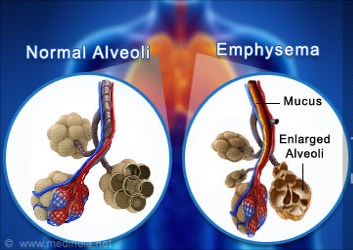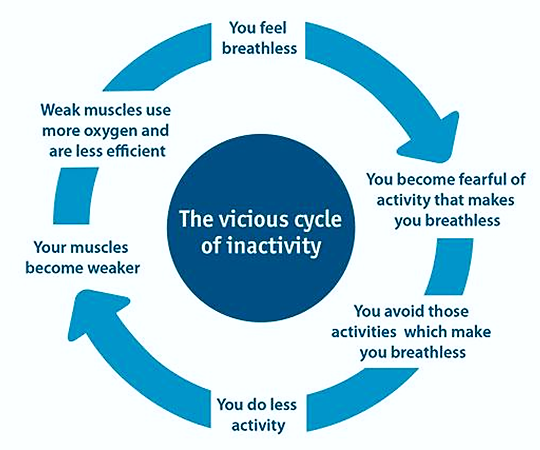COPD and Polio
Question: I started smoking when I was in college, and smoked steadily until I quit at age 30. I am now 80 and have had some breathing problems. I am being checked for COPD. Are polio survivors being diagnosed with COPD a lot? Is it one of the post-polio medical issues we face? I really think the smoking has something to do with it. Thank you.
Answer: This is a great question that has a very short simple answer and a much longer answer all at the same time. The short answer is “No”, COPD itself is a lung disease and not a Post-Polio medical issue.
I’m guessing that most readers would like a bit more so I will give the longer answer as well. Although COPD is a lung problem, alterations with progressive PPS can increase the function impact of COPD. First let’s talk about the lung issue. COPD (Chronic Obstructive Lung Disease) is a problem that includes elements of Chronic Bronchitis, Emphysema and Asthma. For different people some elements may be more prevalent than others. Many factors influence each of these elements including genetics, allergies, medications and, obviously, smoking.
Unfortunately, smoking has many other risks and some can be permanent. Smoking can cause permanent physical harm to the lungs such that a distant 12 year history of smoking could be one part of the cause of your COPD. Nevertheless, given the fact that the smoking was 50 years ago, a good primary care physician and/or pulmonologist needs to look closely at other causes for COPD. It may be that the problem is not at all COPD or it may be that there is a large allergic asthmatic component that is easily treated. The evaluation and management of COPD is beyond the scope of this article. At the same time, it is a good example of the fact that it is extremely important to fully evaluate medical issues that are impacting function and I encourage you to ask detailed questions so you can understand the specifics of your Pulmonary work up.
Having said that, it is important to know that the symptoms of COPD include cough, sputum production, wheezing and shortness of breath. Many of these symptoms can be activity / exertion related. It is also not uncommon at all for an individual with Post-Polio to have activity /exertion related shortness of breath. This symptom may be a functional limitation and thus when it is caused by both COPD and PPS, there is a “Double Whammy” that can impair overall functional status. So in addition to looking at the presence or absence of COPD and managing it well (if present), it is important to look at how PPS can influence shortness of breath.
PPS can have a profound effect on an individual’s mobility and activity. This in turn leads COPD and PPS to deconditioning and deconditioning soon leads to shortness of breath with activities that were formerly routine. It’s a bit of a vicious cycle. Additionally, biomechanical changes in gait can lead to less efficient ambulation and an increased reliance on the upper extremities. This is more strenuous and another common cause of shortness of breath. In some cases, adjustment to bracing or introducing bracing can restore biomechanical support and reduce the effort of standing and walking. Lastly, increase in weight that comes with aging and reduction in activity also increases the work of standing and walking, especially if an elderly person has any level of heart disease.
In summary, this question is a good one to think about the interaction of many medical issues above and beyond PPS that can all impact shortness of breath (and function). In addition to working with a good primary care physician to manage these medical issues, regular exercise and weight loss is always a good idea. For further information, consider reading my prior article “Exercise and Weight Loss for the Polio Survivor”.
As far as smoking is concerned? It’s NEVER too late for anyone to quit (regardless of whether or not they are a Polio survivor). Give yourself a gift and get rid of the cigarettes once and for all.



